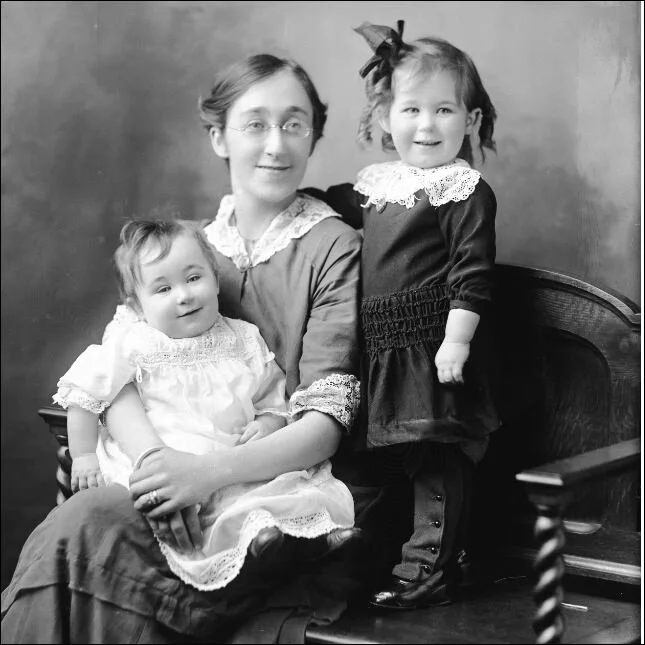
Soon to be published: An Exploration of Peterborough’s Most Amazing Movie-Going History
Packed to the Doors: Peterborough Goes to the Movies
Two companion books:
Lives of the Theatres, and
Show People
The two companion volumes of Packed to the Doors provide a social and cultural history, packed with illustrations, detailing one medium-sized city’s long, historic infatuation with motion pictures – about the times, the theatres, the experiences over the years, and the people who worked in the movie-going business in Peterborough, Ontario.
Peterborough – From the Cinematographe to the Multiplex
“That the public of Peterborough is generally interested in and amused by motion pictures is beyond dispute.” — Peterborough Daily Review, Sept. 25, 1909.
Robert G. Clarke
Photo taken outside 39 Hunter St. West, east of George St. N., at what was (in 2019) Hobart’s Steak House and once, long before that, the Regent Theatre. The picture I’m holding, though, is of the Allen Theatre on George Street, c.1921. Clifford Skarstedt, Examiner photo, April 8, 2019.
Editorial stack and finished book, by Jamie Swift and Ian McKay, Between the Lines, 2012.
Robert G. Clarke – that’s me, I guess, at least most days. For reasons well beyond my control, I was born at Ross Memorial Hospital in Lindsay, Ont. — even though my family was living in a wartime house in Peterborough. I grew up in Peterborough, attending Queen Mary Public School and PCVS and Knox United Church and going to downtown movie theatres from an early age. I left town in 1963 to attend Queen’s University in Kingston – sort of earning an Hons. B.A. in history and English (1967) and furthering my movie-going education (joining the Kingston Film Society as well as skipping off to see movies when I should have been studying). After that I lived for a bit in London (England), Toronto, Ottawa, and Toronto again. I completed a second degree, a B.Journalism at Carleton University, in 1976.
I began working with Between the Lines, a small publisher in Toronto, in 1978 and continued to be associated with, and work for, the press even after I moved back to Peterborough in 1990 and took up freelance book editing. In 1997 I put together a posthumous book by a great friend: dian marino: Wild Garden: Art, Education, and the Culture of Resistance. In 2008 I was shortlisted for the national Tom Fairly Award for Editorial Excellence for my work on Ruth Howard’s Gold Dust on His Shirt: The True Story of an Immigrant Mining Family.
My own books include Ties That Bind: Canada and the Third World (1982), co-edited with Richard Swift; Getting Started on Social Analysis in Canada, 3rd. ed., co-written with Michael Czerny and Jamie Swift; A Judge of Valour: Chief Justice Sam Freedman – In His Own Words (Faculty of Law, University of Manitoba, 2014), and Books Without Bosses: Forty Years of Reading Between the Lines, a graphic book illustrated by the talented Kara Sievewright (2017). I have placed articles from my research in Heritage Gazette of the Trent Valley (published by the Trent Valley Archives) and short pieces in the Peterborough Historical Society bulletins. The scholarly journal Ontario History has published two pieces based on my research into Peterborough movie-going history: “In Search of George Scott: Jack of All Trades, Motion Picture Pioneer, World Explorer,” vol. CXII, no.1 (Spring 2020), pp.1–25; and “ ‘Mr. Stubbs the Entertainer’ and His Travelling Motion Picture Show,” vol. CVI, no.1 (Spring 2022), pp.42–63. I’m pleased to say that I was awarded the Peterborough Historical Society’s F.H. Dobbin Heritage Award for 2020 in recognition of the George Scott article. Many thanks to all those involved.
For only a nickel. This, I’m happy to say, was clearly not me. Ad for the Royal Theatre, Examiner, July 13, 1910, p.1.
A Big Thank You:
You wouldn't be reading this now without the encouragement, support, and creative computer wizardry of my son, Jonah Cristall-Clarke, who is helping so much to take me deeper into the twenty-first century. My daughter, Gabrielle Clarke, a therapist and artist, is a constant source of advice, hope, and inspiration — just check out her website https://www.simplicitypathlove.art/ to see what I mean.
And thanks also to the rest of my constant support group: Ferne Cristall, Pete Barbour (Gabe’s partner), Alex Gates (Jonah’s partner), John Wadland, Richard Peachey, Krista English, Ken Brown, Jon Oldham (of the Peterborough Museum and Archives), and Elwood Jones and Heather Aiton Landry (and the other good folks at Trent Valley Archives). Paul Moore, cinema historian par excellence of Ryerson University, has been a constant source of advice and information. And thanks, finally, to all the members of the original ReFrame group who did so much to help set this historical project in motion.





































